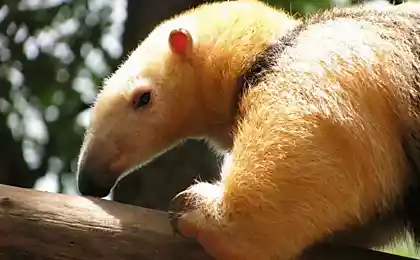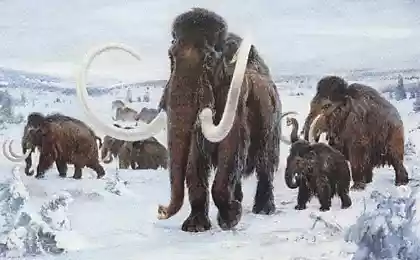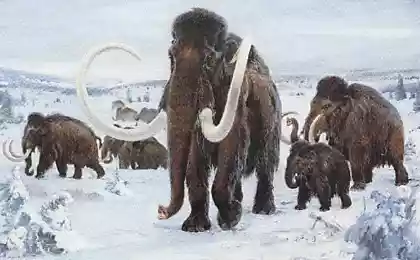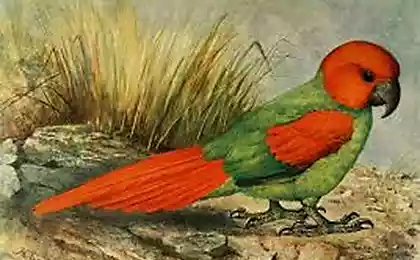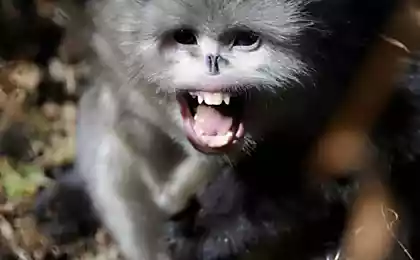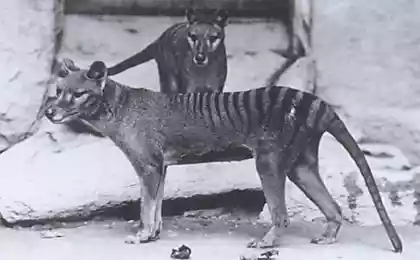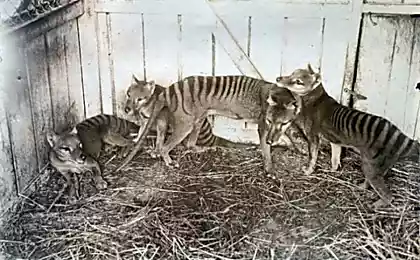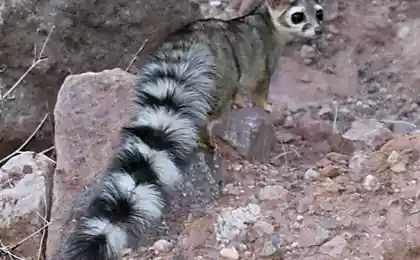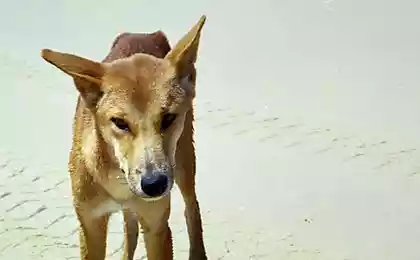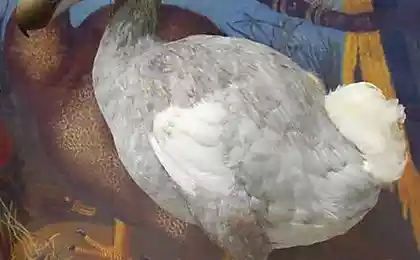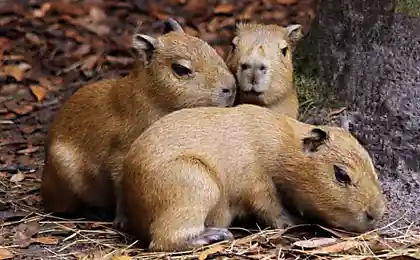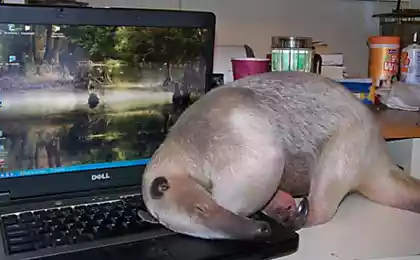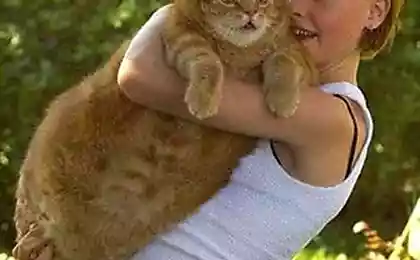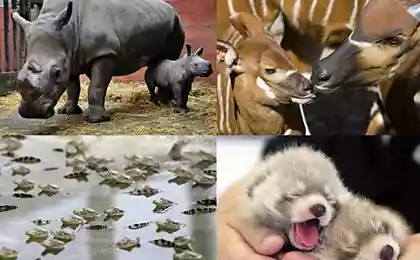1565
Marsupial anteater
Marsupial anteater or nambat - family mammal marsupial anteaters; the only representative of the family of the same name. It lives in Australia.
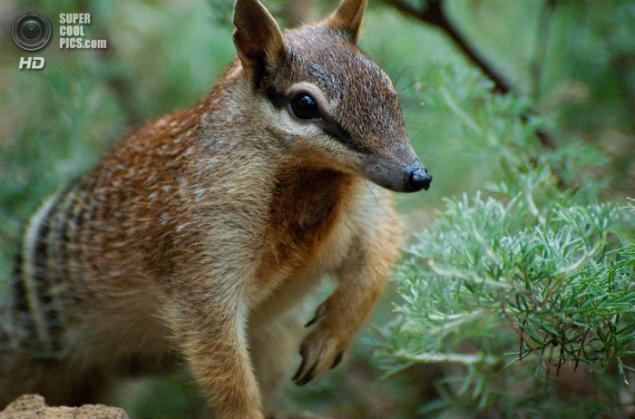
The dimensions of this marsupial small: body length of 17 to 27 cm, tail - 13-17 cm. The weight of an adult animal varies from 280 to 550 g; Males are larger than females. His head marsupial anteater flattened, elongated snout and pointed, his mouth a little. Wormlike tongue may protrude from the mouth of almost 10 cm.
The eyes are large, pointy ears. The tail is long, bushy as a squirrel, not grasping. Usually nambat holding it horizontally, with slightly curly tip. Feet rather short, widely spaced, armed with strong claws. The forelegs with five fingers, back - with four.
The coat had nambata thick and hard. Nambat - one of the most beautiful Australian marsupials he painted in gray-brown or reddish color. The hair on the back and upper thighs covered with 6-12 white or cream stripes. In the eastern nambatov monochromatic coloring than the western. On the muzzle visible black longitudinal band. The belly and limbs yellowish-white, ocher.
Teeth marsupial anteater is very small, weak and often asymmetrical: molars right and left may be of different length and width. Altogether nambata 50-52 tooth. Hard palate stretches much further than most mammals, which is typical of other "dlinnoyazychnyh" animals (pangolins, armadillo). Females have four teats. Brood pouch is absent; there is only the Milky field bordered curly hair.
It feeds almost exclusively nambat termites, ants rarely. Other invertebrates eats only occasionally. This is the only marsupial that eats only social insects; in captivity marsupial anteater eats daily to 20,000 termites. Nambat looking for food with the help of his extremely acute sense of smell. Clawed front paws, he digs the ground or breaks rotten wood, then sticky tongue catches termites. Nambat swallows prey or as a whole, or just chewed chitin shell.
Since limbs and claws marsupial anteater (unlike other mirmekofagov - echidnas, anteaters, aardvarks) weak and unable to cope with the strong Apiary, he hunts mostly in the afternoon, when the insects in search of food move through the underground galleries or under the bark of trees. Fluorescent Activity nambata synchronized with the activity of termites and the ambient temperature. So, in the summer by mid-day the soil is strongly warms, insects and go deep into the ground, so move to Twilight nambaty lifestyle; in winter they are fed in the morning until noon, about 4 hours.
Nambat quite agile, can climb trees; at the slightest danger hiding in the shelter. He spends the night in secluded places (shallow burrows, hollow trees) on a bed of bark, leaves, dry grass. Sleep has a very deep, like suspended animation. There are many cases when people with fallen trees and accidentally burned nambatov who do not have time to wake up. Except for the breeding season, marsupial anteaters kept alone, taking the individual area of 150 hectares.
Being caught nambat not bite or scratch, but only grunts or whistles abruptly.
In connection with economic development and land clearing marsupial anteater population declined sharply. However, the main reason for the decrease of its number - the persecution of predators. Because of the daily lifestyle nambaty more vulnerable than most medium-sized marsupials; they hunt birds of prey, dingoes, feral dogs and cats, and especially red foxes, which were brought to Australia.
At the end of 1970, there were nambatov less than 1 000 individuals. As a result of intensive security measures, destroying foxes and reintroduction nambatov population managed to increase. However, this animal is still included in the list of the International Red Data Book with the status of "endangered».
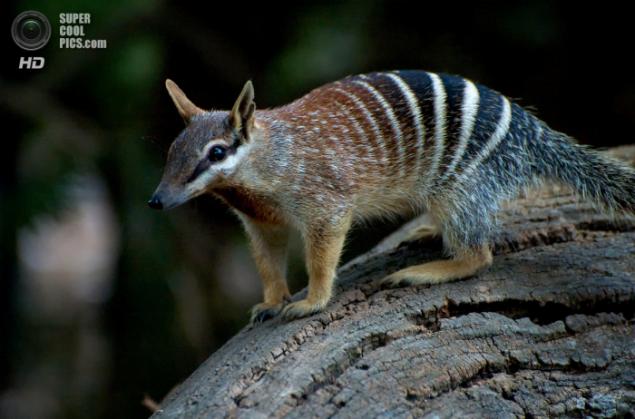
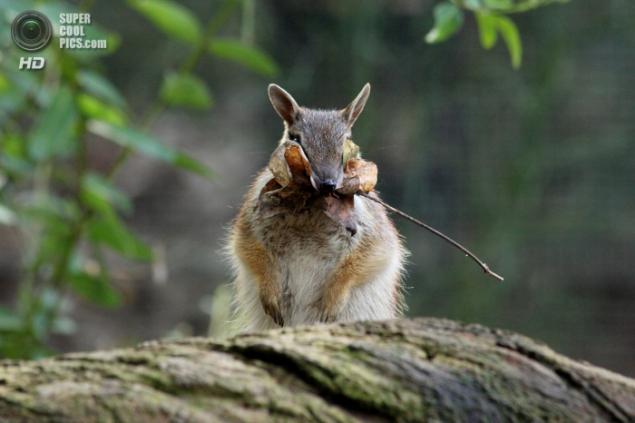
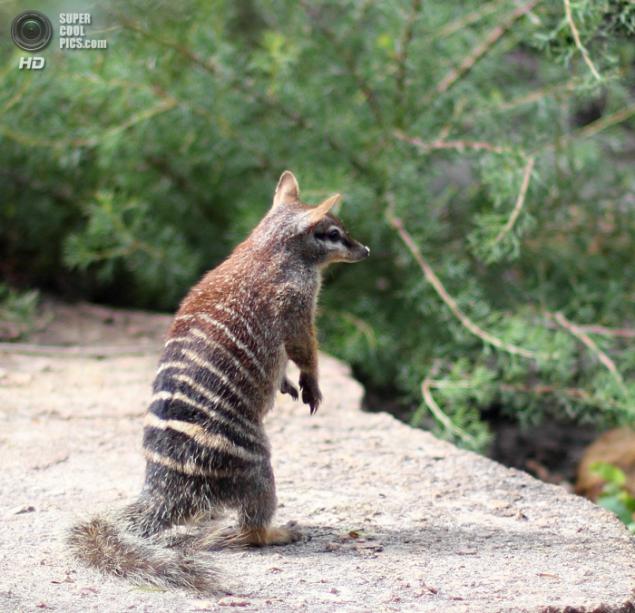
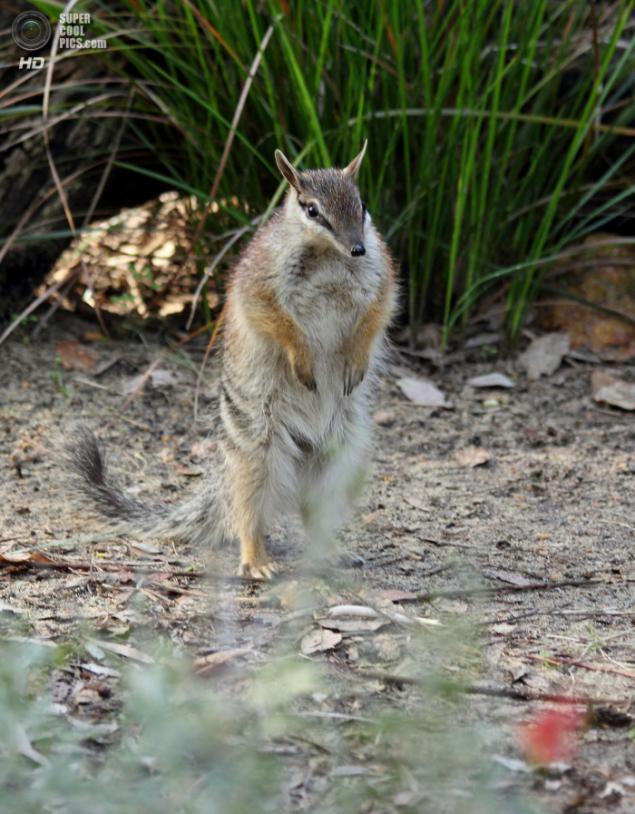
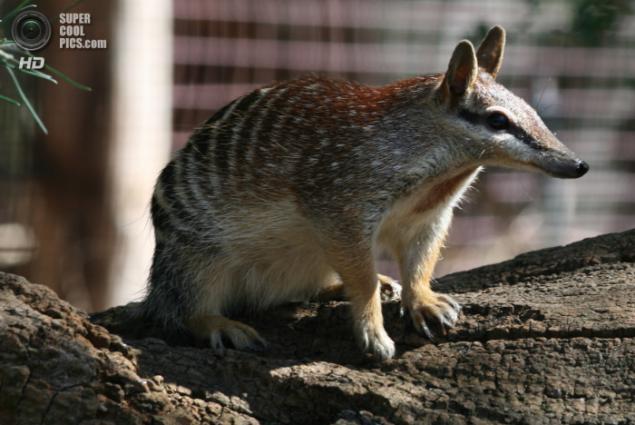
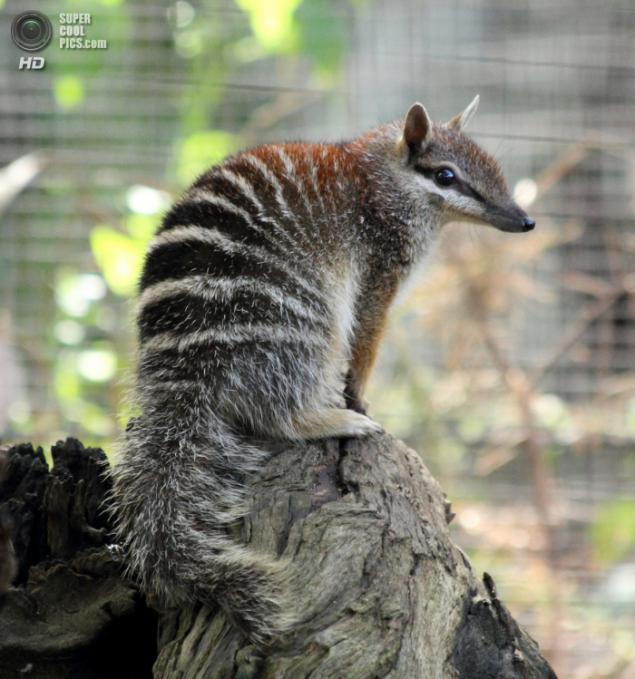
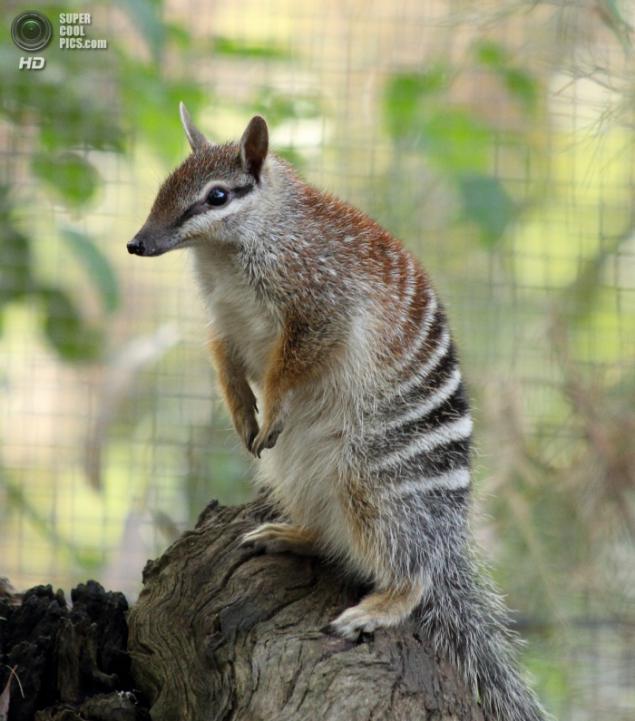
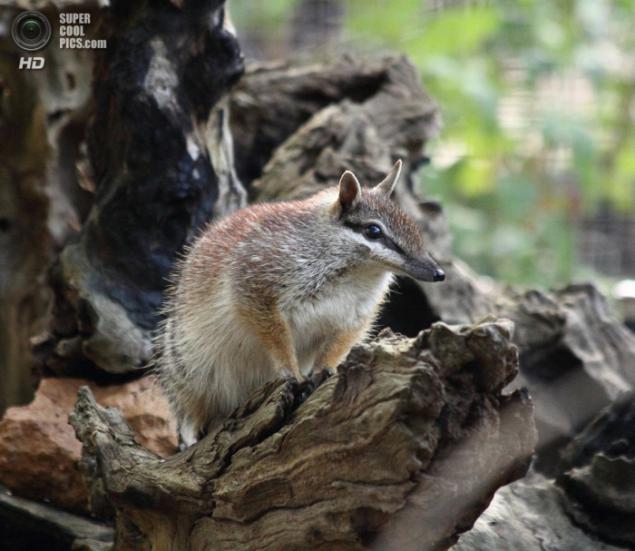
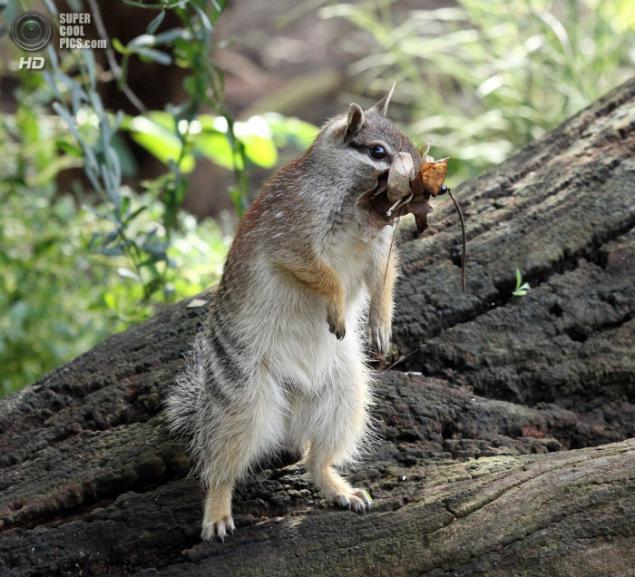
©

The dimensions of this marsupial small: body length of 17 to 27 cm, tail - 13-17 cm. The weight of an adult animal varies from 280 to 550 g; Males are larger than females. His head marsupial anteater flattened, elongated snout and pointed, his mouth a little. Wormlike tongue may protrude from the mouth of almost 10 cm.
The eyes are large, pointy ears. The tail is long, bushy as a squirrel, not grasping. Usually nambat holding it horizontally, with slightly curly tip. Feet rather short, widely spaced, armed with strong claws. The forelegs with five fingers, back - with four.
The coat had nambata thick and hard. Nambat - one of the most beautiful Australian marsupials he painted in gray-brown or reddish color. The hair on the back and upper thighs covered with 6-12 white or cream stripes. In the eastern nambatov monochromatic coloring than the western. On the muzzle visible black longitudinal band. The belly and limbs yellowish-white, ocher.
Teeth marsupial anteater is very small, weak and often asymmetrical: molars right and left may be of different length and width. Altogether nambata 50-52 tooth. Hard palate stretches much further than most mammals, which is typical of other "dlinnoyazychnyh" animals (pangolins, armadillo). Females have four teats. Brood pouch is absent; there is only the Milky field bordered curly hair.
It feeds almost exclusively nambat termites, ants rarely. Other invertebrates eats only occasionally. This is the only marsupial that eats only social insects; in captivity marsupial anteater eats daily to 20,000 termites. Nambat looking for food with the help of his extremely acute sense of smell. Clawed front paws, he digs the ground or breaks rotten wood, then sticky tongue catches termites. Nambat swallows prey or as a whole, or just chewed chitin shell.
Since limbs and claws marsupial anteater (unlike other mirmekofagov - echidnas, anteaters, aardvarks) weak and unable to cope with the strong Apiary, he hunts mostly in the afternoon, when the insects in search of food move through the underground galleries or under the bark of trees. Fluorescent Activity nambata synchronized with the activity of termites and the ambient temperature. So, in the summer by mid-day the soil is strongly warms, insects and go deep into the ground, so move to Twilight nambaty lifestyle; in winter they are fed in the morning until noon, about 4 hours.
Nambat quite agile, can climb trees; at the slightest danger hiding in the shelter. He spends the night in secluded places (shallow burrows, hollow trees) on a bed of bark, leaves, dry grass. Sleep has a very deep, like suspended animation. There are many cases when people with fallen trees and accidentally burned nambatov who do not have time to wake up. Except for the breeding season, marsupial anteaters kept alone, taking the individual area of 150 hectares.
Being caught nambat not bite or scratch, but only grunts or whistles abruptly.
In connection with economic development and land clearing marsupial anteater population declined sharply. However, the main reason for the decrease of its number - the persecution of predators. Because of the daily lifestyle nambaty more vulnerable than most medium-sized marsupials; they hunt birds of prey, dingoes, feral dogs and cats, and especially red foxes, which were brought to Australia.
At the end of 1970, there were nambatov less than 1 000 individuals. As a result of intensive security measures, destroying foxes and reintroduction nambatov population managed to increase. However, this animal is still included in the list of the International Red Data Book with the status of "endangered».









©
